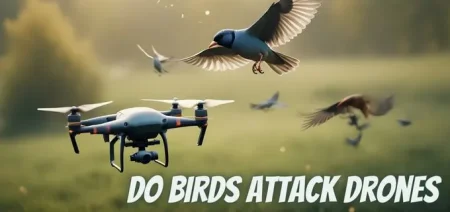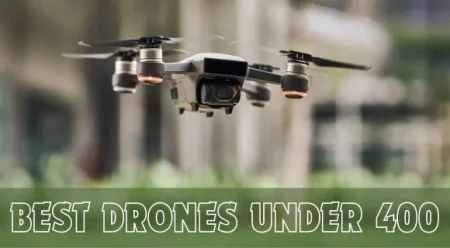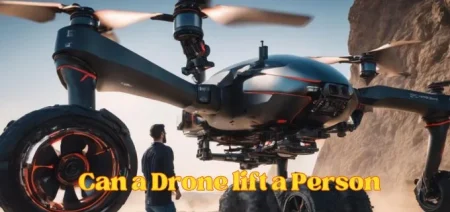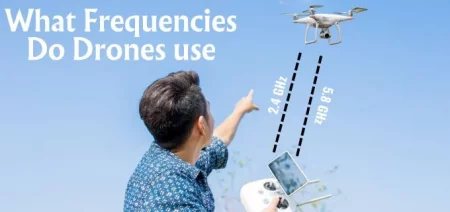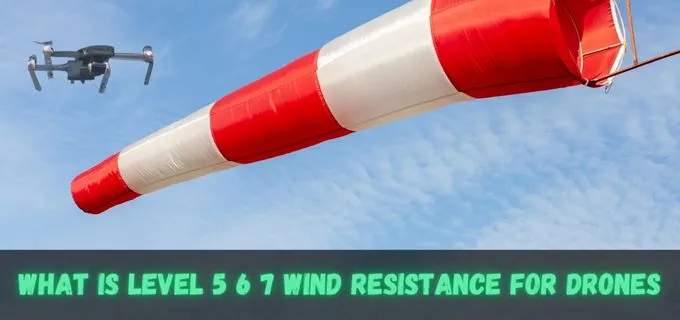
In recent years, drones have gained significant traction in many sectors, from entertainment and photography to logistics and defense. Their versatility and adaptability have increased demand for enhanced performance in various environmental conditions.
A crucial factor determining a drone’s performance and stability is its wind resistance. In the world of drones, air resistance is typically categorized into serval levels. In this blog post, we will primarily focus on the Level 5 6 7 Wind Resistance For Drones
What Is Level 5 6 7 Wind Resistance For Drones
Wind resistance refers to a drone’s capability to withstand and operate effectively in windy conditions. This capability is not universal across all drone models; rather, it varies and is categorized into different levels, each representing a certain threshold of wind speed a drone can handle.
In this blog post, we will delve into three high-level wind resistance categories: Level 5, Level 6, and Level 7, exploring what each level entails, examples of drones rated for these levels, and their practical applications and limitations. Here, we have shared some good drones for windy conditions with high wind resistance.
Stay with us as we journey through this captivating exploration of drone air resistance levels, highlighting why these specifications matter and how they can impact your drone operations.
What is Drones Wind Resistance
Wind resistance, or drag, is the opposing force that a drone faces when moving in the air. It is primarily determined by the drone’s design and speed. When air resistance increases, the drone must expend more energy to maintain its flight.
It plays a fundamental role in the functioning of drones. Drones must withstand varying wind conditions to ensure steady flight, precise controls, and reliable performance.
Wind affects drone flight in several ways, from the altitude at which the drone can fly to its stability and even battery life. For instance, when a drone flies against the wind, it consumes more power, thus reducing its flight time.
Also, high wind speeds can challenge the drone’s stability, making it harder to control and maintain a steady flight.
What are the different Drone Wind Resistance Levels?
A drone with excellent wind resistance can perform reliably in challenging weather conditions and deliver consistent results.
The air resistance of a drone is influenced by various factors, including its weight, design, and stability systems. A heavier drone, for instance, might handle wind better than a lighter one but might also consume more power. Similarly, a drone’s design, including its shape, size, and materials, can either streamline it for better wind resistance or make it more susceptible to wind.

The drones is generally categorized into different levels, each indicating the maximum wind speed the drone can handle without compromising its performance. These levels range from Level 1, suitable for light breezes, to higher levels that handle more robust gusts.
The drone’s design and engineering are the primary consideration in defining these levels. The drone’s weight, aerodynamics, motor power, and stabilizing technology are crucial in determining its wind resistance capabilities.
Brief Explanation of the Different Levels (1-4)
Level 1 and 2 drones are usually smaller, lighter, and more suited for indoor or calm weather operations. They can typically handle wind speeds of up to 10-15 mph.
Level 3 and 4 drones can withstand higher wind speeds, making them suitable for outdoor use in less-than-ideal weather conditions. They can handle wind speeds between 15-25 mph, with level 4 drones being robust enough for some commercial applications.
These levels give us a sense of drones’ increasing capabilities and resilience as we progress up the levels.
Drone wind resistance levels chart
Let’s now delve into our primary focus: Levels 5, 6, and 7, and understand what each level signifies, which drones are rated for these levels, and their real-world applications and limitations.
| Wind Resistance Level | Wind Speed Range | Description | Typical Applications |
| Level 1 | Up to 10 km/h (6 mph) | Suitable for light breezes and calm weather conditions | Indoor flying, beginner use |
| Level 2 | 11-20 km/h (7-12 mph) | Can handle gentle winds with minimal impact on stability and control | Outdoor flying, basic use |
| Level 3 | 21-28 km/h (13-17 mph) | Provides moderate wind resistance, suitable for slightly breezy conditions | Aerial photography, hobbyist |
| Level 4 | 29-38 km/h (18-24 mph) | Offers solid wind resistance, capable of withstanding moderate gusts | Aerial videography, enthusiasts |
| Level 5 | 39-49 km/h (24-30 mph) | Designed for strong winds, maintains stability and control in moderate wind conditions | Aerial photography, semi-professional use |
| Level 6 | 50-61 km/h (31-38 mph) | Withstands high wind speeds, ensuring stability and control in challenging conditions | Industrial inspections, professional use |
| Level 7 | 62+ km/h (39+ mph) | Maximum resistance level, operates reliably in extremely challenging wind conditions | Specialized applications, professional cinematography |
What Is Level 5 Wind Resistance For drones
It signifies a significant step up from the previous categories, representing a drone’s ability to withstand wind speeds typically up to 29-38 kilometers per hour (18-24 miles per hour). This level of air resistance is particularly useful in moderate to high wind conditions and can handle wind gusts that lower-level drones might struggle with.
Example of Level 5 Drone
Drones equipped with this air resistance include models like the DJI Mavic Air 2, which is renowned for its strong wind-resistance capabilities despite its relatively compact size. This drone model’s advanced aerodynamic design and powerful motors allow it to maintain stability and control even in challenging wind conditions.
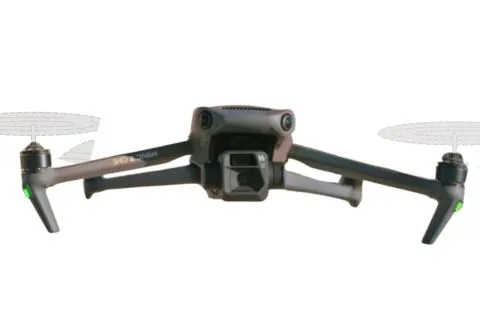
The primary advantage of such drones are their enhanced stability and control in windy conditions. This feature makes them ideal for aerial photography and videography applications, where stability is key to capturing clear, blur-free shots. However, it’s important to note that as wind speeds increase, even these drones may experience decreased maneuverability and shorter flight times due to increased power consumption.
What is level 6 wind resistance for drones?
Level 6 wind resistance in drones refers to their capability to operate at high wind speeds, usually ranging from 39 to 49 kilometers per hour (24 to 30 miles per hour). Drones at this level can perform effectively in challenging weather conditions due to advanced design elements that enhance their stability and control. Such drones often have robust frames and powerful propulsion systems that maintain their flight path despite strong winds.
Drones with Level 6 wind resistance are commonly used in professional applications, such as industrial inspections or search and rescue missions, where operating in challenging weather conditions is often required. However, despite their impressive wind resistance, these drones still face limitations. For instance, the increased wind speeds can cause rapid battery drain, and extreme gusts may still affect the drone’s stability and control.
Example of Level 6 Wind Resistance Drone
An example of a drone capable of withstanding Level 6 wind resistance is the DJI Inspire 2. With its robust design and powerful propulsion system, this drone is designed to hold its ground against high wind speeds while maintaining excellent control and stability.
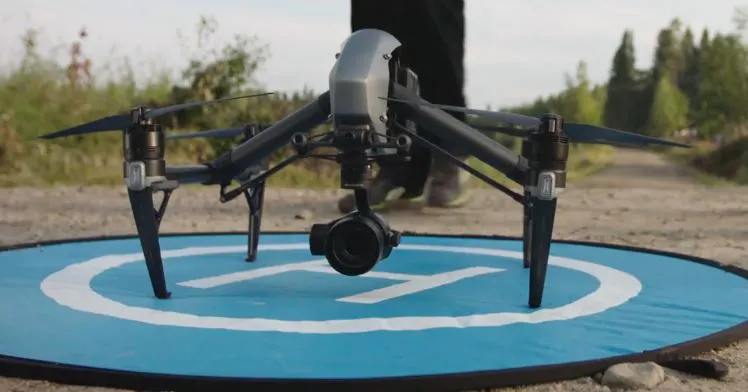
What Is Level 7 Wind Resistance For Drones
Level 7 wind resistance for drones signifies a high capability to operate in wind speeds typically ranging from 50 to 61 kilometers per hour (31 to 38 miles per hour). These drones, designed with advanced features, demonstrate superior stability and control in severe weather conditions, where lower-level drones may fail to function.
Drones with Level 7 wind resistance are built with highly durable materials and include powerful motors and sophisticated flight control systems, enabling them to maintain their position and flight trajectory even amid strong winds.
They also showcase improved aerodynamics and advanced GPS and sensor systems for better stability and position-holding in windy scenarios.
While Level 7 wind resistance expands the utility of drones in areas like aerial photography, industrial inspections, and disaster management, these drones do have limitations.
For instance, as wind speeds reach their maximum capacity, the drone’s power consumption might increase, potentially reducing its flight time.
Level 7 Drone Example
A prime example of a drone with Level 7 wind resistance is the Freefly Alta 6. Built for professional cinematographers, this drone stands out for its sturdy build, advanced flight controls, and, most notably, its exceptional wind resistance capabilities.

The Freefly Alta 6’s design allows it to hold its position even against strong gusts, providing steady and reliable performance in conditions that would ground most other drones.
Comparing Levels 5, 6, and 7 Wind Resistance
Having explored Levels 5, 6, and 7 wind resistance individually, it’s important to understand how they compare against each other. All three levels are designed to handle moderate to high wind speeds, but the key difference lies in the maximum wind speed each can effectively manage.
Level 5 is suitable for hobbyist or semi-professional use, handling up to 38 kilometers per hour (24 miles per hour), whereas Level 6, designed to manage up to 49 kilometers per hour (30 miles per hour), is aimed at professional applications that require a bit more resilience against the wind. On the other hand, Level 7, withstanding winds up to 61 kilometers per hour (38 miles per hour), is tailored for high-end professional and industrial applications that require operation in exceptionally challenging weather conditions.
Future Developments in Wind Resistance Technology for Drones
Researchers and developers are constantly pushing the boundaries of what’s possible, aiming to produce drones that can withstand even stronger wind speeds while maintaining stability and control.
Future advancements include integrating more sophisticated flight control systems that adjust automatically to changing wind conditions, further enhancing a drone’s stability.
Other potential developments could be in drone design and materials, creating even more aerodynamic and durable models that withstand harsh weather conditions.
Predictions for the future suggest that we see the emergence of consumer-grade drones with wind resistance capabilities beyond Level 7. These drones would provide greater flexibility and resilience, enabling their use in various applications and weather conditions.
However, such advancements would pose new challenges, including ensuring safe operation, managing increased power consumption, and controlling costs.
How to find wind speed before flying?
Gathering information about the wind speed before flying a drone is crucial. Here are a few methods to determine wind conditions:
- Local weather reports: Check weather websites, mobile apps, or local news sources for updated wind speed information in your area.
- Anemometers or handheld wind meters: These portable devices measure wind speed and can provide real-time readings at your flying location. They are handy tools for drone pilots to assess wind conditions on-site.
- Weather stations: Some areas may have weather stations or sensors that provide live wind speed data. Research if there are any nearby stations accessible to the location where you plan to fly your drone.
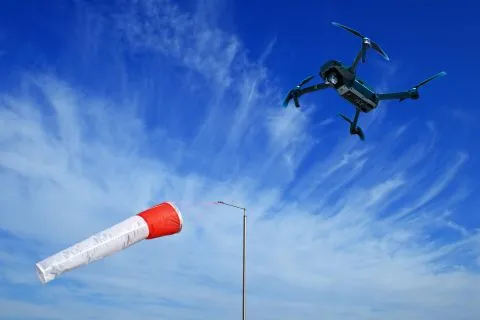
Remember, wind conditions can vary at different altitudes, so it’s important to consider wind speed and gusts at both ground level and higher altitudes where the drone will be flying.
It’s best to fly within the wind limits specified by the drone manufacturer and exercise caution when wind speeds are close to or exceed the drone’s designated wind resistance level.
Can Drones Hold Their Altitude In Strong Winds
Drones can generally maintain their altitude in strong winds, depending on factors like their wind resistance rating, design, and flight control systems. Modern drones, particularly those with higher wind resistance levels, are designed to withstand and compensate for moderate to strong winds. They utilize advanced flight control algorithms and stabilization technologies to ensure stability and altitude retention in challenging wind conditions.
Drones can generally hold their altitude well at wind level 5. However, as the wind level increases, the drone’s sensors must be more resilient to respond and make the required adjustments adequately.
Drones adjust their motor speeds and flight control inputs to counteract external forces when facing strong winds. By appropriately managing motor power in response to wind gusts, drones effectively resist altitude changes and remain at the desired height.
However, it is important to recognize that drones have limits to their ability to hold altitude in strong winds. Extreme gusts or wind speeds exceeding the drone’s specified wind resistance level can overpower its stabilization systems, leading to altitude fluctuations. In such cases, maintaining precise control and stable flight becomes more challenging.
Does it consume more battery to fly in a strong wind?
Yes, flying a drone in strong winds can increase power consumption and, consequently, a shorter flight time. When drones encounter strong winds, they must exert more power to maintain stability and counteract external forces.
The increased power demand leads to a higher battery discharge rate, reducing the overall flight duration. When planning drone flights, it’s important to consider wind conditions and their impact on battery life.
What Is A Safe Wind Speed For DJI Drone
Determining a safe wind speed for DJI drones, or any drone for that matter, depends on several factors, including the specific model of the drone, its wind resistance rating, and the drone pilot’s skill level. While DJI drones are generally designed to handle varying wind conditions, it’s important to consider certain guidelines to ensure safe and successful flights.
DJI provides wind resistance ratings for their drone models, typically from Level 1 to Level 6. These ratings indicate the maximum wind speeds that the drones can withstand without compromising stability and control.

However, it’s essential to note that the wind resistance rating alone does not guarantee complete safety in all wind conditions.
As a general rule of thumb, it’s advisable to fly DJI drones at wind speeds well below their maximum wind resistance rating.
For example, if a DJI drone has a Level 5 wind resistance rating, it is recommended to fly it at wind speeds below the specified range, typically up to 29-38 kilometers per hour (18-24 miles per hour).
What happens when I fly a drone in strong winds?
Operating a drone in strong winds can pose numerous challenges:
- The most significant issue is maintaining stability and control.
- Strong gusts of wind can affect a drone’s flight path, causing it to drift or experience altitude fluctuations. These conditions can increase the difficulty of precisely maneuvering the drone and capturing stable footage.
- Additionally, flying in strong winds increases the risk of losing control or encountering unexpected flight behavior, potentially leading to crashes or damage to the drone.
FAQS
The term “Class 5 wind resistance” is often used interchangeably with “level 5 wind resistance” and represents the same concept. It signifies a drone’s ability to withstand wind speeds within the specified range, typically 29 to 38 kilometers per hour (18 to 24 miles per hour). Drones with Class 5 wind resistance are engineered to maintain stability and control in moderate wind conditions.
If you fly a drone above its designated wind resistance level (e.g., Level 5), you push it beyond its intended capabilities. The drone may struggle to maintain stability, control, and altitude in stronger winds, leading to compromised flight performance.
It can become challenging to navigate the drone accurately, increasing the risk of crashes or unpredictable behavior. Flying a drone above its specified wind resistance level is not recommended and may damage the drone or even loss of the aircraft.
Conclusion
Understanding the wind resistance levels of drones is vital for both drone enthusiasts and professionals. As we’ve explored, each level represents a different wind speed threshold that a drone can handle, impacting the drone’s performance, stability, and flight time.
Levels 5, 6, and 7 offer moderate to high wind resistance, making drones at these levels suitable for a wide range of applications, from aerial photography and videography to industrial inspections and professional cinematography. However, as the wind resistance level increases, so does the need for skilled piloting and awareness of the limitations, such as potential battery drain and reduced maneuverability at higher wind speeds.
As the drone industry continues to advance and innovate, we can anticipate seeing drones capable of withstanding even stronger winds, expanding their potential uses and capabilities. As you embark on your drone journey, consider wind resistance levels and how they fit into your.

